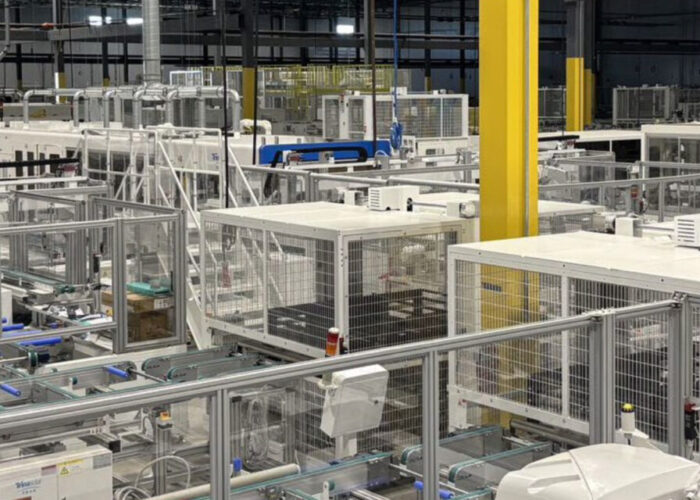
The world’s largest asset manager has broken its own fundraising records through a new vehicle for both renewables and non-renewables, a milestone it says was possible thanks to the appetite for energy investments at a time of volatility.
BlackRock – the manager of US$6.4 trillion of assets across all strategies – recently announced the third fund of its Global Energy & Power Infrastructure Fund (GEPIF) series has closed with US$5.1 billion in commitments from investors, two years after fundraising began.
Try Premium for just $1
- Full premium access for the first month at only $1
- Converts to an annual rate after 30 days unless cancelled
- Cancel anytime during the trial period
Premium Benefits
- Expert industry analysis and interviews
- Digital access to PV Tech Power journal
- Exclusive event discounts
Or get the full Premium subscription right away
Or continue reading this article for free
GEPIF III’s success crossing the US$5 billion mark places it far ahead of the US$3.5 billion it was meant to raise, as well as the US$4.5 billion maximum – known as the hard-cap – BlackRock had set. It is, the firm said, the “largest alternative investment fundraise in [its] history”.
The US$5.1 billion capital pool will be invested according to BlackRock’s three-pronged strategy for the GEPIF series: power sector plays, including natural gas and renewables such as solar; energy transportation and storage; and the utility sector.
Contacted by PV Tech today, a BlackRock spokesperson declined to confirm how much of the US$5.1 billion has been earmarked for solar and storage investments, as well as the countries and regions the firm will be targeting for these two technologies.
The haven of energy assets as global markets lurch
In a prepared statement, BlackRock’s Edwin Conway conveyed the firm’s belief in the value of energy infrastructure investments more broadly, at a time when the COVID-19 outbreak is pushing global economies to the brink of recession.
Conway, the global head of the BlackRock Alternative Investors unit, said investors wary of equity market shocks are ramping up allocations to “less-correlated” private market segments. “Investor demand for this fundraise reinforces our belief that infrastructure will play an increasingly important role in portfolio construction moving forward,” Conway added.
The past few weeks of stock market rout have seen renewables discussed as a haven for investors looking for stability. However, solar players have warned one of COVID-19’s side effects – the plunge of power prices – could put financiers off zero-subsidy ventures, at a time when the segment was expected to grow rapidly.
BlackRock – itself not immune to the volatility, with assets under management shrinking from US7.4 trillion to US$6.4 trillion over Q1 2020 – said GEPIF III’s US$5.1 billion were raised from over 50 institutional investors, including pension plans, insurers, sovereign wealth funds and non-profits.
The firm’s GEPIF series sits alongside its renewables-only GRP franchise. Launched with a US$2.5 billion target, the latest fund (GRP III) will focus on wind and solar plays in OECD markets, with BlackRock telling PV Tech last year it sees opportunities around C&I solar and energy storage.
PV Tech has set up a dedicated tracker to map out how the COVID-19 pandemic is disrupting solar supply chains worldwide. You can read the latest updates here.
If you have a COVID-19 statement to share or a story on how the pandemic is disrupting a solar business anywhere in the world, do get in touch at [email protected] or [email protected].






